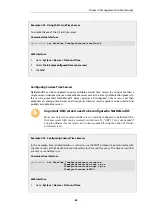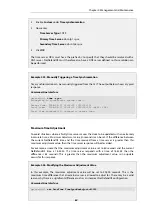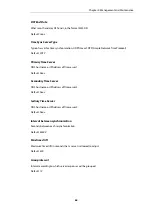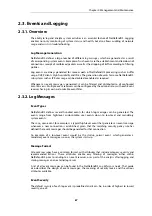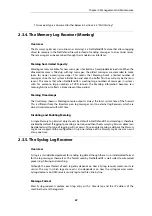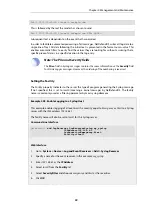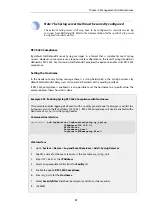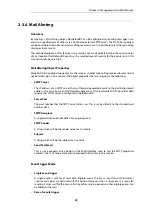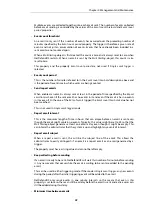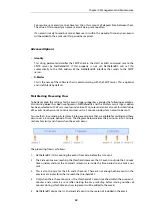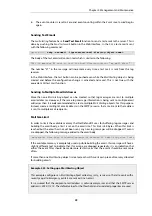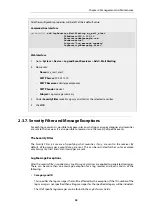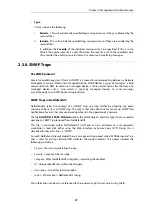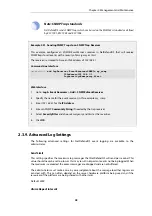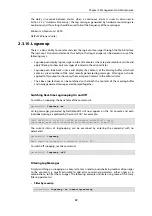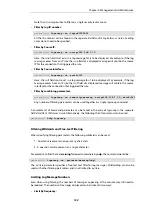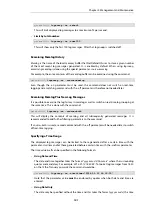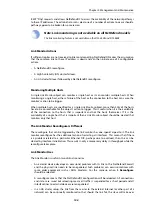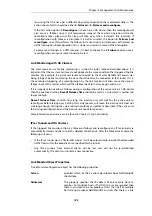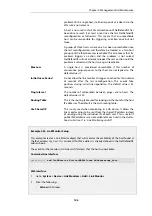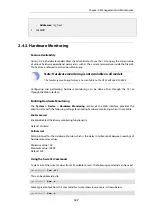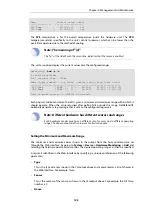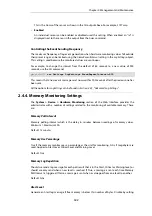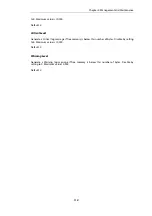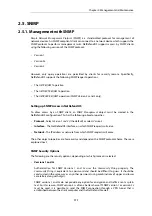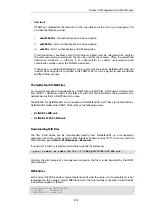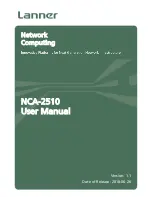
•
Type
This can be one the following:
i.
Exclude - This will exclude the specified log message(s) even if they are allowed by the
severity filter.
ii.
Include - This will include the specified log message(s) even if they are excluded by the
severity filter.
In addition, the Severity of the included message(s) can be specified. If this is set to
Default
the original severity is used. Otherwise, the severity is set to the specified value.
This provides the ability to raise (or lower) the severity of specific log messages.
2.3.8. SNMP Traps
The SNMP protocol
Simple Network Management Protocol
(SNMP) is a means for communicating between a Network
Management System (NMS) and a managed device. SNMP defines 3 types of messages: a
Read
command for an NMS to examine a managed device, a
Write
command to alter the state of a
managed device and a
Trap
which is used by managed devices to send messages
asynchronously to an NMS about a change of state.
SNMP Traps in NetDefendOS
NetDefendOS takes the concept of an SNMP Trap one step further by allowing
any
event
message to be sent as an SNMP trap. This means that the administrator can set up SNMP Trap
notification of events that are considered significant in the operation of a network.
The file DLINK-DFL-TRAPS-MIB.mib defines the SNMP objects and data types that are used to
describe an SNMP Trap received from NetDefendOS.
This file is contained within NetDefendOS itself and can be extracted to a management
workstation's local disk either using the Web Interface or Secure Copy (SCP). Doing this is
described further in
For each NetDefend Firewall model there is one generic trap object called
DLNNNosGenericTrap
,
that is used for all traps (where
NNN
indicates the model number). This object includes the
following parameters:
•
System
- The system generating the trap.
•
Severity
- Severity of the message.
•
Category
- What NetDefendOS subsystem is reporting the problem
•
ID
- Unique identification within the category.
•
Description
- A short textual description.
•
Action
- What action is NetDefendOS taking.
This information can be cross-referenced to the separate
Log Reference Guide
using the ID.
Chapter 2: Management and Maintenance
97
Summary of Contents for NetDefendOS
Page 30: ...Figure 1 3 Packet Flow Schematic Part III Chapter 1 NetDefendOS Overview 30 ...
Page 32: ...Chapter 1 NetDefendOS Overview 32 ...
Page 144: ...Chapter 2 Management and Maintenance 144 ...
Page 284: ...Chapter 3 Fundamentals 284 ...
Page 392: ...Chapter 4 Routing 392 ...
Page 419: ... Host 2001 DB8 1 MAC 00 90 12 13 14 15 5 Click OK Chapter 5 DHCP Services 419 ...
Page 420: ...Chapter 5 DHCP Services 420 ...
Page 573: ...Chapter 6 Security Mechanisms 573 ...
Page 607: ...Chapter 7 Address Translation 607 ...
Page 666: ...Chapter 8 User Authentication 666 ...
Page 775: ...Chapter 9 VPN 775 ...
Page 819: ...Chapter 10 Traffic Management 819 ...
Page 842: ...Chapter 11 High Availability 842 ...
Page 866: ...Default Enabled Chapter 13 Advanced Settings 866 ...
Page 879: ...Chapter 13 Advanced Settings 879 ...

